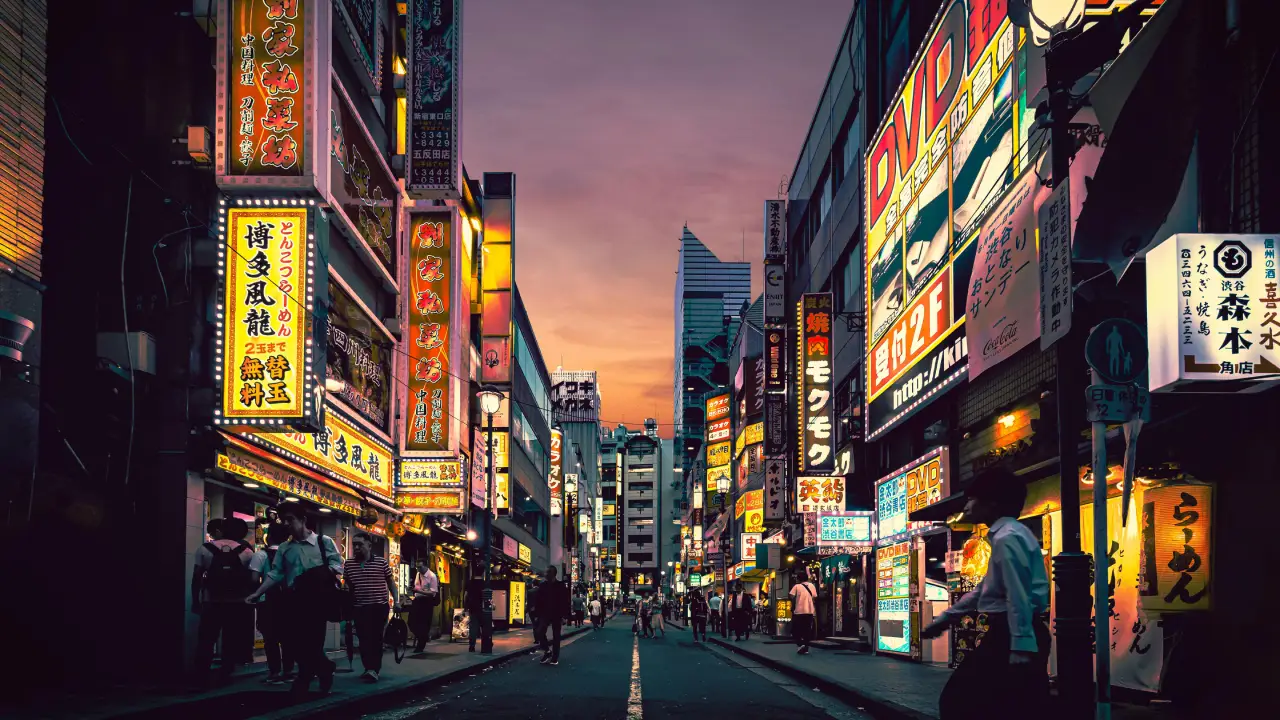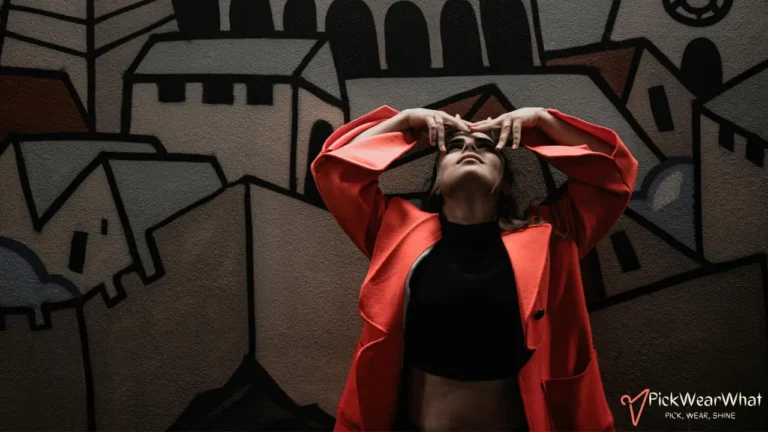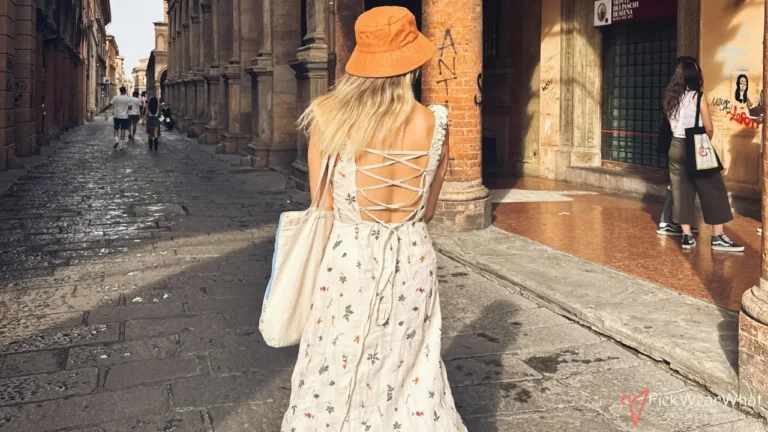When planning what to wear in Japan, consider the country’s distinct seasons and the diverse cultural settings you’ll experience. Japan is a blend of traditional and modern influences, so your attire can range from casual to more formal, depending on the occasion. In warmer months, lightweight fabrics like cotton or linen are ideal, as summers can be hot and humid. Think airy dresses, shorts with comfortable tops, or light pants paired with sandals or walking shoes for exploring Japan’s bustling cities or serene gardens.
During cooler seasons, layering is essential, especially if you’re visiting mountainous regions or taking part in outdoor activities. Opt for jeans or trousers with sweaters, scarves, and a stylish coat to stay warm. For footwear, comfortable shoes are a must, especially since you’ll likely be walking a lot or visiting temples where shoes need to be removed. Japanese culture values modesty, so keeping attire neat and respectful, especially in more traditional settings, will enhance your experience while exploring the country’s beauty and rich history.
Understanding Japan’s Climate
Japan experiences distinct seasons with a variety of temperatures ranging from hot, humid summers to cold, snowy winters, and mild, pleasant springs and autumns. Here’s a breakdown of what to expect:
- Summer (June – August): Hot and humid, with temperatures ranging from 75°F to 90°F (24°C to 32°C).
- Fall (September – November): Cooler and crisp, with pleasant weather and beautiful autumn foliage. Temperatures range from 50°F to 70°F (10°C to 21°C).
- Winter (December – February): Cold, with occasional snowfall, especially in northern regions. Temperatures range from 30°F to 50°F (-1°C to 10°C).
- Spring (March – May): Mild with cherry blossoms in bloom, temperatures range from 50°F to 70°F (10°C to 24°C).
What to Wear in Japan Throughout the Year?
Japan experiences a wide range of seasonal weather, from snowy winters to hot, humid summers. Depending on the time of your visit, your wardrobe will need to adapt to these changes. Winter months call for cozy layers, while summer months demand light and breathable fabrics. Spring and fall bring moderate temperatures, ideal for layering. It’s essential to pack versatile clothing to handle temperature fluctuations and occasional rain.
| Month | Weather Conditions | What to Wear in Japan |
|---|---|---|
| January | Winter – Cold temperatures nationwide – Snow in northern regions and mountainous areas – Avg temp: Tokyo ~5°C (41°F) | – Heavy coat or down jacket – Thermal layers (sweaters, long underwear) – Scarves, gloves, and hats – Warm boots or insulated shoes – In snowy areas: waterproof boots and outerwear |
| February | Winter – Cold continues – Snow persists in the north – Avg temp: Tokyo ~6°C (43°F) | – Similar to January attire – Heavy coat or down jacket – Warm accessories (scarves, gloves) – Layered clothing – Waterproof gear if visiting snowy regions |
| March | Early Spring – Gradual warming – Cherry blossoms begin in late March in some areas – Avg temp: Tokyo ~9°C (48°F) | – Light to medium-weight jacket – Long-sleeved shirts and sweaters – Comfortable closed-toe shoes – Layers for variable temperatures |
| April | Spring – Mild and pleasant – Cherry blossom season – Avg temp: Tokyo ~15°C (59°F) | – Light jacket or cardigan – Long-sleeved tops – Trousers or skirts with leggings – Comfortable walking shoes – Umbrella for occasional rain |
| May | Late Spring – Warm and sunny – Green foliage – Avg temp: Tokyo ~19°C (66°F) | – Light clothing (T-shirts, blouses) – Light sweater or shawl for evenings – Comfortable sneakers or sandals – Sunglasses and sun protection |
| June | Early Summer / Rainy Season (Tsuyu) – Warm and humid – Frequent rain – Avg temp: Tokyo ~22°C (72°F) | – Light, breathable fabrics – Raincoat or umbrella – Waterproof footwear – Avoid heavy fabrics – Quick-dry clothing is beneficial |
| July | Summer – Hot and very humid – Rainy season continues into early July – Avg temp: Tokyo ~26°C (79°F) | – Lightweight, airy clothing (cotton, linen) – Short sleeves, shorts, skirts – Sandals or breathable shoes – Sunhat, sunglasses, and sunscreen – Umbrella for sudden showers |
| August | Summer – Hottest month – High humidity – Occasional typhoons – Avg temp: Tokyo ~27°C (81°F) | – Similar to July attire – Light, loose-fitting clothes – Open-toe sandals – Sun protection is essential – Stay hydrated and consider a handheld fan |
| September | Late Summer / Early Autumn – Warm but cooling down – Typhoon season – Avg temp: Tokyo ~24°C (75°F) | – Light clothing with a light jacket or cardigan – Waterproof gear (umbrella, raincoat) – Comfortable shoes – Be prepared for both warm days and cooler evenings |
| October | Autumn – Mild temperatures – Clear skies – Avg temp: Tokyo ~18°C (64°F) | – Light jacket or sweater – Long-sleeved shirts – Trousers or jeans – Comfortable walking shoes – Layers to adjust to changing temperatures |
| November | Autumn – Cooler temperatures – Beautiful autumn foliage – Avg temp: Tokyo ~13°C (55°F) | – Medium-weight coat or jacket – Sweaters and long-sleeved tops – Scarves for added warmth – Closed-toe shoes or boots |
| December | Winter – Cold temperatures begin – Dry weather – Avg temp: Tokyo ~8°C (46°F) | – Warm coat or down jacket – Layered clothing (sweaters, thermals) – Gloves and hats – Warm footwear |
What to Wear in January in Japan?

January in Japan is typically cold, with temperatures ranging from 30°F (-1°C) to 50°F (10°C), especially in northern regions and mountainous areas where snow is common.
- Men’s January Attire: Choose a thick winter coat paired with thermal sweaters and warm pants. Gloves, scarves, and hats are important accessories to keep warm in icy conditions. Opt for sturdy boots, especially in snowy areas.
- Women’s January Attire: A heavy winter coat over thermal layers, paired with leggings or warm pants, is perfect for January’s chilly weather. Be sure to pack gloves, a scarf, and waterproof boots for added comfort.
What to Wear in February in Japan?
February remains cold in most parts of Japan, with temperatures similar to January. Northern Japan and ski resorts experience heavy snowfall, while southern areas start to show signs of an early spring.
- Men’s February Attire: A warm coat layered over sweaters or thermal tops is necessary. Jeans or wool trousers will keep you comfortable in colder weather. Don’t forget waterproof footwear for snowy conditions.
- Women’s February Attire: Layer up with a thick coat, warm pants or leggings, and thermal tops. Make sure to pack gloves, scarves, and a beanie to keep warm, especially if you’re traveling to colder regions.
What to Wear in March in Japan?

March marks the beginning of spring, with temperatures slowly rising to around 40°F (4°C) to 60°F (15°C). As cherry blossoms begin to bloom, the weather can still be chilly, especially in the mornings and evenings.
- Men’s March Attire: A light jacket or sweater over long-sleeve shirts is perfect for March’s mild weather. Pair this with comfortable pants or jeans, and walking shoes are ideal for enjoying outdoor activities.
- Women’s March Attire: A light jacket, sweater, or cardigan with jeans or skirts and tights is suitable for early spring. Bring comfortable shoes, especially if you plan on exploring cherry blossom spots.
What to Wear in April in Japan?
April is a beautiful month with cherry blossoms in full bloom, and temperatures range from 50°F (10°C) to 70°F (21°C). The weather is usually mild, making it perfect for outdoor exploration.
- Men’s April Attire: Light jackets, long-sleeved shirts, or t-shirts are ideal for April. Pair them with comfortable pants or jeans, and don’t forget to wear walking shoes for long strolls in parks or temples.
- Women’s April Attire: A light jacket or sweater paired with dresses or skirts and tights is great for enjoying the cherry blossom season. Comfortable shoes are a must for walking around the parks.
What to Wear in May in Japan?
May is warm and sunny, with temperatures ranging from 60°F (16°C) to 75°F (24°C), making it a pleasant time to explore Japan.
- Men’s May Attire: Light and breathable fabrics such as cotton t-shirts or short-sleeved shirts with pants or shorts work well. A light jacket for cooler evenings might come in handy.
- Women’s May Attire: Sundresses, skirts, or light pants with breathable tops are perfect for May. A light cardigan or shawl for cooler evenings completes the outfit.
What to Wear in June in Japan?
June brings the rainy season (Tsuyu), with temperatures between 70°F (21°C) and 80°F (27°C). Expect frequent rain and high humidity.
- Men’s June Attire: Light fabrics and breathable clothing are essential. Consider carrying an umbrella or raincoat, and wear shoes that can handle wet conditions.
- Women’s June Attire: Light dresses, skirts, or pants with breathable tops are suitable for humid weather. An umbrella or a lightweight raincoat is necessary for sudden rain showers.
What to Wear in July in Japan?
July is hot and humid, with temperatures ranging from 75°F (24°C) to 90°F (32°C). Be prepared for very warm conditions, especially in urban areas.
- Men’s July Attire: Lightweight clothing such as shorts, t-shirts, and sandals are ideal for Japan’s summer. A hat and sunglasses help protect against the strong sun.
- Women’s July Attire: Light dresses, skirts, or shorts with breathable tops are great for staying cool. Sunglasses, a wide-brimmed hat, and comfortable shoes are perfect for long days outdoors.
What to Wear in August in Japan?
August continues with hot, humid weather, with temperatures ranging from 75°F (24°C) to 90°F (32°C). It is one of Japan’s hottest months.
- Men’s August Attire: Light, breathable fabrics such as cotton or linen are best for staying comfortable. Stick with shorts, t-shirts, and sandals, and don’t forget sunscreen.
- Women’s August Attire: Light dresses or shorts with breathable tops are perfect for the summer heat. A wide-brimmed hat, sunglasses, and sunscreen are essential.
What to Wear in September in Japan?
September brings a slight relief from the intense heat, but temperatures remain warm at 65°F (18°C) to 80°F (27°C). It’s also the beginning of the typhoon season, so expect rain.
- Men’s September Attire: Light layers like t-shirts with a light jacket or raincoat. Bring an umbrella for rainy days and wear comfortable walking shoes.
- Women’s September Attire: Light layers like a blouse and a light jacket or raincoat. Dresses or comfortable pants with shoes fit for walking are ideal for unpredictable weather.
What to Wear in October in Japan?
October is cool and comfortable, with temperatures ranging from 55°F (13°C) to 70°F (21°C). The fall foliage begins to appear, making it a popular time for outdoor activities.
- Men’s October Attire: Light sweaters, jackets, and comfortable pants are perfect for October. Bring walking shoes for exploring gardens and parks.
- Women’s October Attire: Light layers such as a sweater or jacket over a dress or jeans work well. A scarf can add style and warmth for cooler days.
What to Wear in November in Japan?
November offers crisp autumn weather, with temperatures between 45°F (7°C) to 60°F (16°C). It’s one of the best months to experience Japan’s autumn leaves.
- Men’s November Attire: Warmer layers such as jackets, sweaters, and jeans are ideal for November. A scarf and comfortable shoes are essential for cooler days.
- Women’s November Attire: A stylish coat with layers underneath, such as a sweater or cardigan, works well for November. Boots and a scarf are great additions to your wardrobe for the cooler weather.
What to Wear in December in Japan?
December marks the beginning of winter, with temperatures dropping to around 30°F (-1°C) to 50°F (10°C). Snow is common in northern regions.
- Men’s December Attire: A heavy winter coat, thermal layers, and warm pants will keep you comfortable in the cold. Gloves, scarves, and hats are essential for outdoor activities.
- Women’s December Attire: A heavy coat, thermal layers, and warm trousers or leggings are necessary. Don’t forget gloves, a scarf, and boots to keep warm during the chilly December weather.
What to Wear in Japan in Spring (March – May)
Spring in Japan is mild and beautiful, with temperatures ranging from 50°F to 70°F (10°C to 21°C). The season is famous for cherry blossoms (sakura), making it an ideal time for outdoor activities.
What to Wear:
- Men: Light jackets, sweaters, and long-sleeved shirts are perfect for cool mornings and evenings. Comfortable pants or jeans and walking shoes will serve you well as you explore parks and temples.
- Women: Light dresses with cardigans or jackets, paired with skirts or jeans, work well for spring. Comfortable shoes are necessary for walking tours, and a scarf can add a layer of warmth during early mornings.
Tips:
Carry a light jacket for the cooler parts of the day, and consider a small umbrella for the occasional rain shower.
What to Wear in Japan in Summer (June – August)

Summers in Japan are hot and humid, with temperatures ranging from 75°F to 90°F (24°C to 32°C). June also brings the rainy season, so be prepared for wet weather in addition to the heat.
What to Wear:
- Men: Lightweight fabrics like cotton or linen will help you stay cool. T-shirts, shorts, and sandals are ideal for daytime activities. If you’re visiting during the rainy season, a light raincoat and waterproof shoes are essential.
- Women: Sundresses, skirts, or shorts paired with breathable tops are perfect for staying comfortable in the heat. Bring an umbrella or a light rain jacket, especially in June and early July.
Tips:
Hydrate often, wear sunscreen, and consider a hat and sunglasses to protect yourself from the intense sun. Opt for breathable shoes as you may be walking a lot.
What to Wear in Japan in Autumn (September – November)
Autumn in Japan is cool and comfortable, with temperatures ranging from 55°F to 75°F (13°C to 24°C). The season is famous for stunning fall foliage, making it an excellent time for outdoor exploration.
What to Wear:
- Men: Layering is key in autumn. Wear light sweaters or long-sleeved shirts, along with a medium-weight jacket. Jeans or comfortable trousers and walking shoes are great for enjoying the scenic outdoors.
- Women: Layered outfits, such as a sweater over a blouse or dress, work well for adjusting to changing temperatures. A light jacket or coat will keep you warm during cooler mornings and evenings.
Tips:
Autumn is a great time for hiking and enjoying Japan’s natural beauty, so pack comfortable shoes and layers that you can easily adjust depending on the time of day.
What to Wear in Japan in Winter (December – February)
Winters in Japan vary depending on the region, but temperatures generally range from 30°F to 50°F (-1°C to 10°C). Snow is common in northern regions and mountainous areas, while southern Japan tends to experience cold but dry conditions.
What to Wear:
- Men: A heavy winter coat with thermal layers underneath is essential. Sweaters, gloves, scarves, and beanies are also important for keeping warm. Consider waterproof boots if you’re heading to snowy regions.
- Women: A warm coat with thermal tops and bottoms, paired with thick leggings or wool pants, is ideal for winter. Don’t forget gloves, a hat, and a scarf, especially if you’re visiting snowier areas like Hokkaido.
Tips:
If you plan on visiting Japan’s famous ski resorts or other snowy regions, pack extra layers and waterproof gear, including snow boots.
What To Wear In Japan for Different Activities?
When visiting Japan, dressing appropriately for various activities depends on the cultural norms, season, and type of activity. Here’s a guide to help you decide what to wear for different occasions:
1. Sightseeing and Tourist Activities
When sightseeing in Japan, your attire should be comfortable yet practical, considering both the weather and cultural norms. In spring (March to May), light layers such as cardigans or light jackets are perfect for the cooler weather, especially during the cherry blossom season.
Opt for breathable tops and comfortable walking shoes as you explore. Summer (June to August) in Japan can be hot and humid, so light, airy fabrics like cotton or linen are ideal, paired with comfortable sandals or sneakers. In autumn (September to November), the weather is cooler, and layers work well—bring a light jacket and a scarf. For winter (December to February), pack warm layers, including a heavy coat, gloves, and a hat, especially if you’re visiting colder regions like Hokkaido.
2. Visiting Temples or Shrines
Modesty is essential when visiting Japan’s temples or shrines. Wear clothing that covers your shoulders and knees to show respect for the religious setting. Women should avoid overly revealing outfits, while men can wear casual pants with a neat shirt. Since it’s common to remove shoes at some temples, choose shoes that are easy to slip on and off, such as loafers or sneakers, and consider bringing socks if you prefer not to walk barefoot.
3. Dining Out at Restaurants
The dress code for dining in Japan varies depending on the type of restaurant. For casual dining at ramen shops or izakayas, you can wear relaxed outfits like jeans and t-shirts, as long as the attire is clean and presentable. In high-end restaurants, however, more formal attire is expected.
Men should wear dress pants and a collared shirt, while women can opt for a dress or elegant blouse paired with trousers or a skirt. Always look polished and avoid overly casual attire for upscale dining.
4. Business Meetings
Japanese business culture is formal, and the dress code reflects that. Men should wear a dark suit with a white shirt and a conservative tie, while women should opt for a tailored pantsuit or a conservative dress in subtle colors like navy, black, or grey. Flashy or overly bright accessories should be avoided. It’s important to present yourself professionally, as first impressions are highly valued in Japan’s business environment.
5. Attending Festivals
Festivals in Japan often call for traditional attire or casual yet festive clothing. In summer, many people wear a yukata, a light cotton kimono, to celebrate festivals like Tanabata or fireworks displays. If you prefer not to wear traditional clothing, casual outfits like light dresses or shorts with a t-shirt are fine, but ensure your attire is comfortable for the outdoor setting.
For winter festivals, like those in Hokkaido, warm, casual attire such as winter coats and comfortable boots are key to keeping you warm during long hours outdoors.
6. Outdoor Activities (Hiking, Skiing)
Outdoor activities in Japan require attire suited to the specific activity. For hiking, especially during the summer, lightweight, breathable clothing is recommended, along with sturdy hiking shoes and a light rain jacket.
In colder months, wearing layers, including thermal clothing and a warm jacket, will help keep you comfortable on hikes. For skiing, particularly in places like Hokkaido, you’ll need proper winter gear—thermal layers, waterproof ski jackets and pants, gloves, and snow boots to stay warm in the snow.
7. Shopping Districts (Ginza, Shibuya)
Fashion is important in popular shopping districts like Ginza or Shibuya, where people tend to dress stylishly. You’ll want to wear trendy, smart-casual outfits, such as fashionable sneakers paired with tailored jeans or a stylish jacket. In these areas, a modern dress or sleek streetwear is common for women, while men might opt for fitted shirts or jackets. Dressing up a little makes you feel part of the stylish atmosphere in these trendy neighborhoods.
8. Hot Springs (Onsen)
When visiting an onsen, traditional Japanese hot springs, the dress code is straightforward but unique. Most onsen provide a yukata (a light cotton robe) for you to wear within the facility. Swimwear is not typically permitted in traditional onsen, as guests are expected to bathe nude in communal baths.
It’s best to keep your attire simple and comfortable when traveling to the onsen, as you’ll change into the provided yukata once there. The experience is focused on relaxation, so modesty and cleanliness are key.
9. Nightlife (Bars, Clubs, Karaoke)
Nightlife attire in Japan varies depending on the venue. For casual bars and izakayas, a smart-casual look is ideal. Jeans paired with a nice shirt or blouse are perfect for a relaxed evening. For nightclubs in areas like Roppongi or Shibuya, dress up a bit more—men can wear fitted jeans or tailored pants with a stylish shirt, while women might choose a party dress or chic jumpsuit.
High-end venues may have dress codes, so avoid flip-flops or overly casual shoes. High-end bars, especially in districts like Ginza, call for polished outfits—men should wear slacks with a collared shirt or blazer, while women can choose an elegant dress or trousers with a stylish blouse. For karaoke, keep it casual and comfortable, as you’ll likely be sitting and singing with friends, so jeans or a nice top work well.
FAQs On What To Wear in Japan
The best clothing for sightseeing in Japan depends on the season. Light layers in spring and fall, breathable fabrics in summer, and warm coats in winter are ideal. Comfortable shoes are essential for walking.
Yes, shorts are perfectly acceptable during Japan’s hot and humid summer months. However, if visiting temples or religious sites, opt for longer, more modest shorts or light pants.
Modest clothing is recommended for temple and shrine visits. Make sure your shoulders and knees are covered. Both men and women should avoid overly revealing outfits.
Casual dining spots, like ramen shops or izakayas, are fine with casual wear like jeans and t-shirts. However, upscale restaurants may require more formal attire, such as a dress or slacks with a collared shirt.
Yes! Wearing a yukata is common at summer festivals and when visiting an onsen (hot spring). Many hotels and ryokans provide yukata for guests to wear, and they are easy to rent during festivals.




